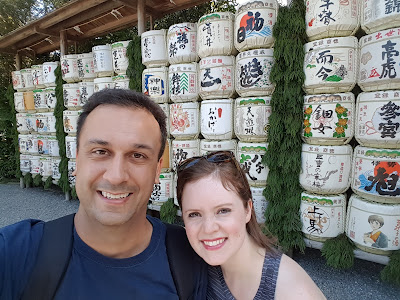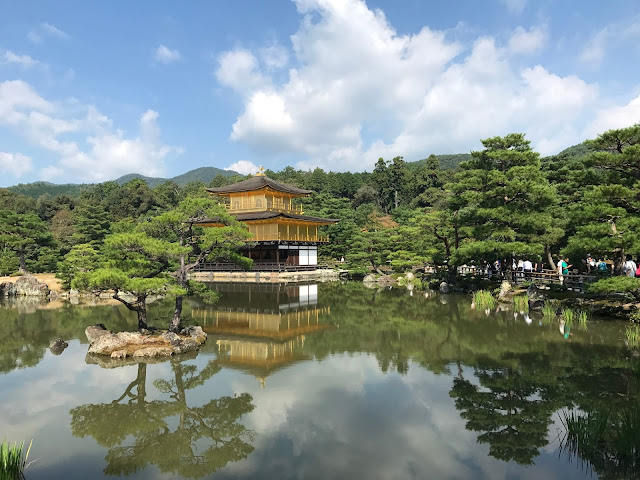Naiku - Inner Shrine - Jingu

After we visited the Geku, we hopped on a bus to Naiku , also known as Ise-Jingu or simply Jinga. All other Shinto shrines in Japan are known as XX Jingu, This one is simple Jingu -- the ultimate. Like all great shrines, this one had a magnificent wall of sake barrels. This ended up being the Christmas card photo! This shrine was even larger than the outer shrine and we spent quite some time wondering from shrine to shrine. The bridge into the shrine was beautiful. We wish we had known what the flags represented/said. From these photos, you can see the crowds of people at the main shrine. We thoroughly enjoyed our time here. It was something to see the most holiest place for Shintos. Time at shrine: 1.5 hr Times visited: 1 Overall: A-







